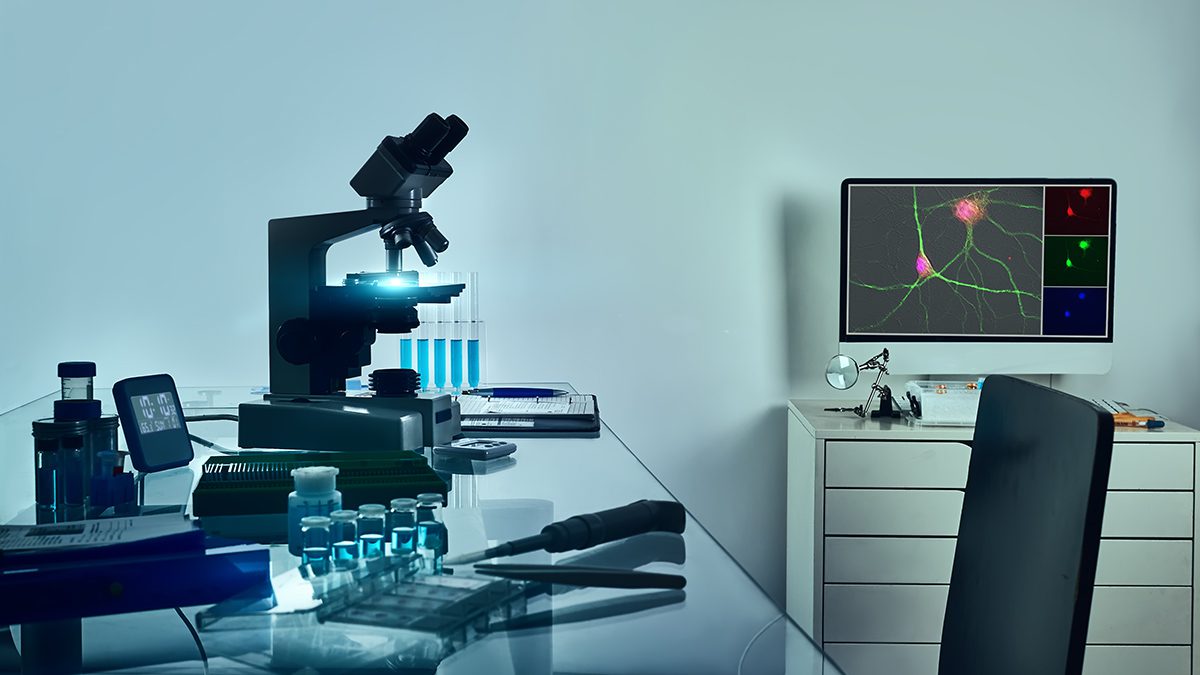
We all know that microscopes are used for biological research and in studying various organisms. You’ve probably held and used one in your science projects.
These days, microscopes hold a special place in the scientific and medical communities. What most of us don’t know, perhaps, is that scientists are relying on microscopes, particularly in the more advanced ones such as fluorescence microscopes to effectively detect viruses, antibodies, and other microorganisms. Microscopes have become indispensable tools amid the continuing research and testing of the SARS-CoV-2 – the virus that causes COVID-19 – and its various mutations.
What is a fluorescence microscope?
A fluorescence microscope is used to study complex samples that cannot be studied under a conventional transmitted-light microscope. Compared to the limited field of view of the traditional light microscopes, a fluorescence microscope can study samples that can’t be examined by the traditional microscope types, and overall obtains better and faster results.
A fluorescent substance takes in the energy of shorter and invisible radiation wavelengths, then releases longer visible light wavelengths. Fluorescence microscopy images are highly sensitive, allowing it to detect substances of low concentrations. That’s why they’re commonly used in diagnostic and clinical settings to detect antibodies, microorganisms, and various substances, including COVID-19 tests.
How does a fluorescence microscope work?
This more advanced type of microscope uses fluorescence and phosphorescence to examine the structure of samples thoroughly. This microscope taps high-intensity light to produce an image to illuminate the sample under it.
To make some important characteristics stand out and for easy identification of any anomalies, various stains are utilized in conjunction with the specimen.
The process takes advantage of the light released by the stained substance that has absorbed either light or electromagnetic radiation. The light produced by the sample is then focused by the objective lens into the detector. They’re further separated from the other weaker fluorescence with the use of a spectral emission filter.
What are the uses of a fluorescence microscope?
Biological research, public health, medical and environmental monitoring can’t be done accurately without the help of fluorescence microscopes. They do have various industrial applications, too.
1. Biological research:
Fluorescence microscopy is widely used to study living cells and cell biology, organelles, single molecules, fluorescent proteins, tissue samples, and antibodies. It’s mainly used to locate the cells, tissues, and nucleic acids, including microorganisms, toxins, and various substances that may impact them.
2. Diagnosis for infectious and autoimmune diseases:
Because it’s highly sensitive, fluorescence microscopy is similarly used in antibody analysis, detection, and identification. This scientific apparatus is being harnessed extensively as the world battles against the deadly SARS-CoV-2 virus. In fact, scientists from Oxford University used fluorescence imaging in the analysis and swift identification of the COVID-19 virus. The reports say it can detect the virus in as short as five minutes.
3. Monitoring the environment:
Fluorescence imaging can help check the pollution levels in the air, water, and soil. Microbial aerosol monitoring, detection, and identification, as well as water analysis and detection of bacterial levels, are essential components to monitor in order to maintain public health.
4. Industrial process management:
Various industry sectors are often blamed for high levels of pollution through their wastes and other environmentally-damaging processes. Procedures that impact the environment and people such as monitoring of clean rooms, detection of fluid contamination, sampling of food and beverages, and sewage treatment can be checked and looked at closely through fluorescence microscopy to ensure that the microorganisms and other substances in question are within the safe levels.
What are the different fluorescence microscope types?
Fluorescence microscopes come in different types, too. These are a few of the most common types sold by the New York Microscope Company.
1. Epifluorescence Microscopes: These are usually used in observing sample specimens and organic samples that are notoriously hard to detect.
2. Confocal Fluorescence Microscopes: These types utilize optical imaging techniques to provide higher optical resolution and contrast for micrographs.
3. LED Fluorescence Microscopes: These are typically cheaper and durable because of the use of light-emitting diodes (LED).
4. Upright Fluorescence Microscopes: As the name suggests, these microscopes study the sample from above. The condenser and light sources located below, and as such, are facing upwards.
5. Inverted Fluorescence Microscopes: This kind of microscope’s light source and condenser are located on the top, facing downwards.
6. Widefield Fluorescence Microscopes: This type illuminates the whole sample and uses the fluorescence contrast method via several types of light sources.
What are the components of a fluorescence microscope?
Fluorescence microscopy can also differ based on these specific components:
- Viewing Heads
- Objectives
- Magnification
- Filters Type of Fluorescence
- Illumination
- Microscope Camera
Manufacturers had previously used xenon, halogen, and mercury bulbs as main light sources. These days, metal halide and light emitting diodes (LED) are preferred for their durability.
Conclusion
While it seems that there’s a wide range of applications for fluorescence microscopy, it does have limitations. For instance, fluorescence fails in samples with photobleaching, where fluorescent molecules accumulate chemical damage from the electrons triggered during the process. Photobleaching also limits the length of time you can view a sample.
For the most part, though, these advanced types of microscope offer invaluable support in various medical and health research and explorations.
Via TechGenyz https://www.techgenyz.com
ConversionConversion EmoticonEmoticon